Spring bulbs are such versatile garden plants. Easy to grow, they are a guaranteed source of early colour for little investment and effort from you. Some can be naturalised in grass, others liven up beds and borders. They are also perfect for pots, bringing spring to spaces without soil. Even if you have only a courtyard or balcony you can enjoy them. Flower bulbs can be planted right the way through autumn, into early winter. Choose the right varieties, they will colour the garden from late winter to early summer.
Before you plant
When you get your bulbs home keep them somewhere cool with good air circulation. Never store in a plastic bag and ideally remove them from the packaging to avoid build-up of moisture and overheating. Small bulbs such as galanthus, fritillaria and iris are best planted as soon as possible. Tulips and large-flowered narcissi are better planted later in late autumn and early winter.
Planting flower bulbs in grass
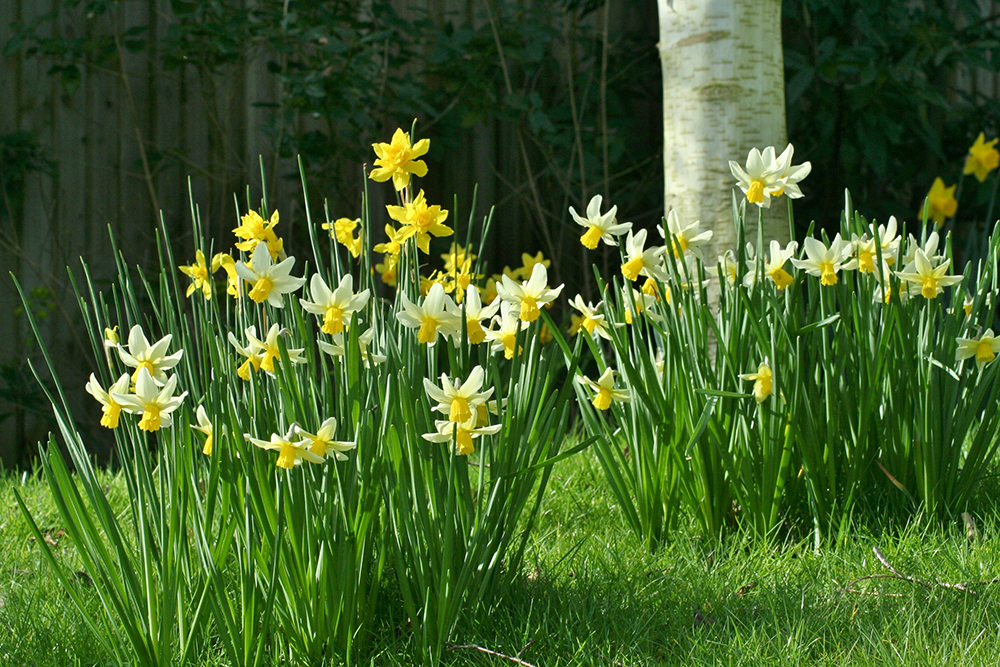
When it comes to planting flower bulbs a bulb planting tool can be awkward. It’s much easier to lift a square of turf with a spade and dig out a hole large enough to accommodate seven to ten bulbs with a bulb’s space between them. You need to plant the bulbs with around three times the depth of the bulb of soil and turf over them. Mix a little Vitax Bonemeal into the soil at the bottom of the planting hole before you place the bulbs.
Bonemeal contains phosphate, which helps the bulbs to produce a strong root system. The flowerbulb already has its own built in supply of nutrients but a little extra phosphate and nitrogen certainly helps. Backfill with the loose soil, replace the turf and firm with your foot.
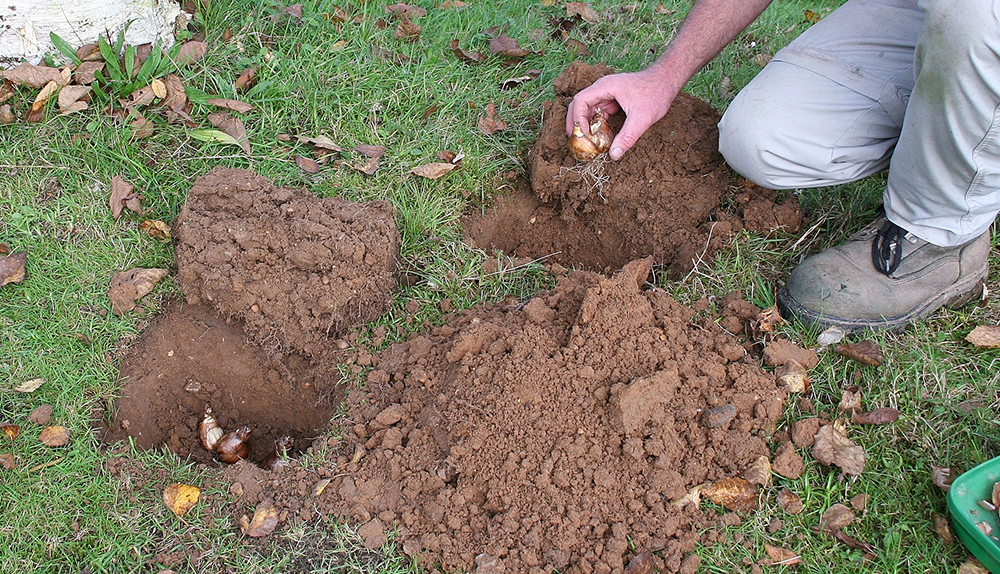
Plant several groups like this close together in a situation where you do not need to mow early in the year. The foliage needs to die down naturally: the leaves supply the bulbs with food for the following season.
Daffodils and narcissi are the most successful bulbs to plant in grass. Use single varieties, rather than mixed, for a more naturalistic effect. The dwarf narcissi are usually the most successful as they are more weather resistant and compact in habit. Look out for ‘February Gold’, ‘Snow Baby’, ‘Jack Snipe’, ‘Thalia’ and the British native daffodil Narcissus pseudonarcissus var. lobularis.
Planting flower bulbs in beds and borders
Flower bulbs are easy to fit in anywhere. They are a great way of livening up planting schemes early in the year before perennials emerge and deciduous shrubs come into leaf. Later in spring you can create exciting colour combinations and add different flower forms.
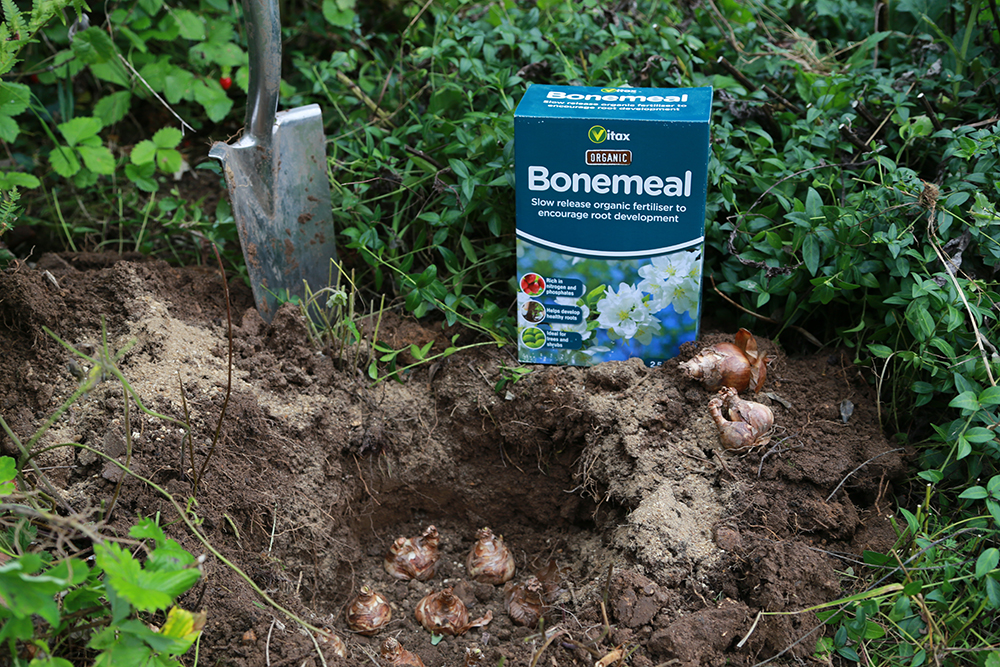
Daffodils and narcissi will come back year after year and they are ideal planted in groups between shrubs and perennials further back in the border where the foliage of other plants will conceal the withering leaves. Plant in groups of five or more of one variety, three times the depth of the bulb.
Add a handful of Vitax Bonemeal to the planting hole and soil you will use to backfill. Here again the fertiliser encourages a good root system.
Tulips will often appear in subsequent years if your soil is well drained. On heavy soils you may need to replant annually. Plant in groups of five or seven and use the wonderful tulip colour palette to create some stunning planting combinations. When you buy always think how you are going to use them.
From late spring into early summer alliums, the ornamental onions add striking blooms amongst low shrubs and perennials. Like narcissi these are long-term garden plants. As the blooms of most varieties are relatively large they are best planted in small groups of two or three bulbs, or even as singles, and distributed through the planting. Allium cristophii is one of the most reliable.
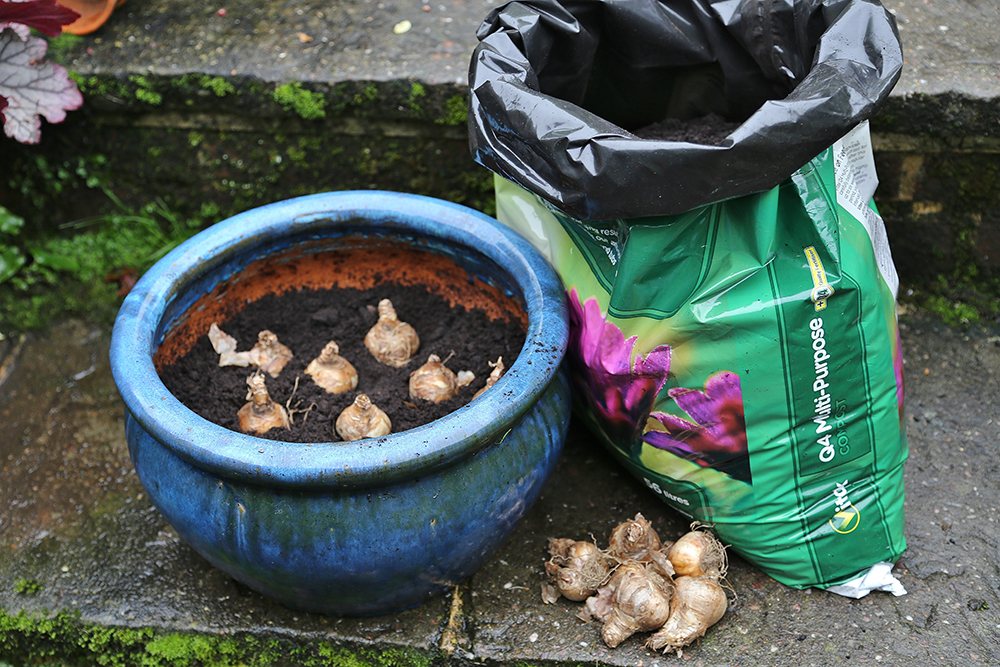
Planting flower bulbs in pots and containers
All gardens should make the most of pots filled with spring flowering bulbs to bring that early colour close to the house. Tulips, narcissi, hyacinths and many dwarf bulbs can bring months of colour to the patio and doorstep. Most are only good in pots for a season, but they can be planted out in the garden afterwards for another year.
Use good sized pots, large enough to accommodate a number of bulbs sufficiently spaced so that the blooms will be well displayed. Pots need to be deep enough to allow you to plant three times the depth of the bulb. Use a generous layer of broken crocks in the bottom of each pot to allow good drainage and raise the pots slightly above the ground using pot feet or pieces of broken tile. The bulbs will not appreciate waterlogged compost.
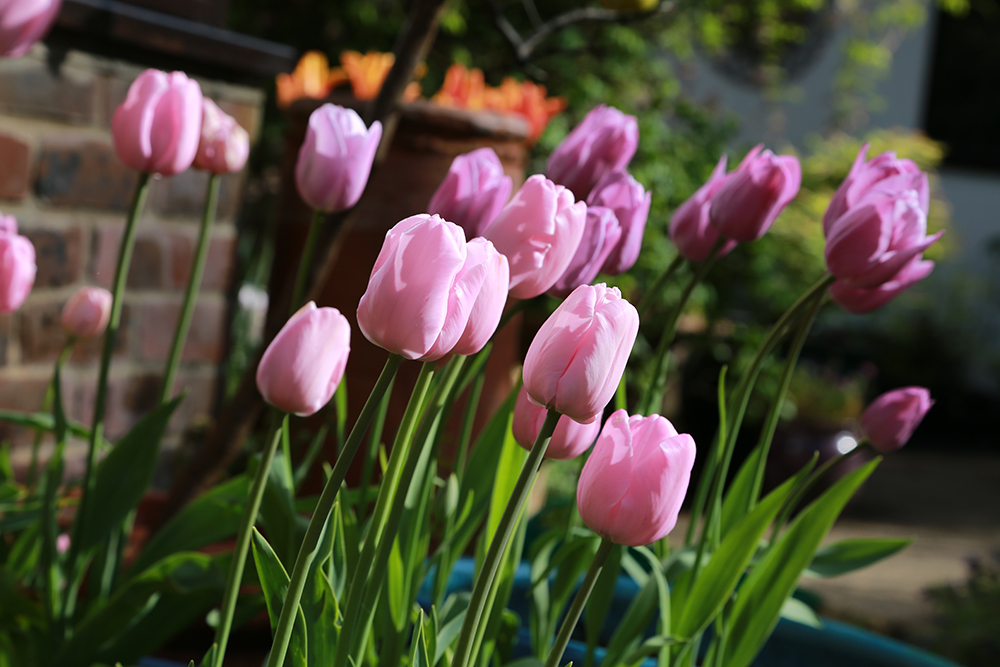
Outdoors bulb fibre is not the best growing medium, it is much better to use Vitax Q4 Multi-Purpose compost. This contains slow release nutrients to feed the bulbs as they start to grow, encouraging a healthy root system.
Tulips are particularly effective in pots and will usually be happier than they are in the open ground. Space the bulbs 1-2 cm apart and choose colours that look good in your garden. You can mix two or more varieties together, but if you want them to bloom together make sure they flower at the same time.
Andy McIndoe
Article from Common Sense Gardening Members, Vitax World

